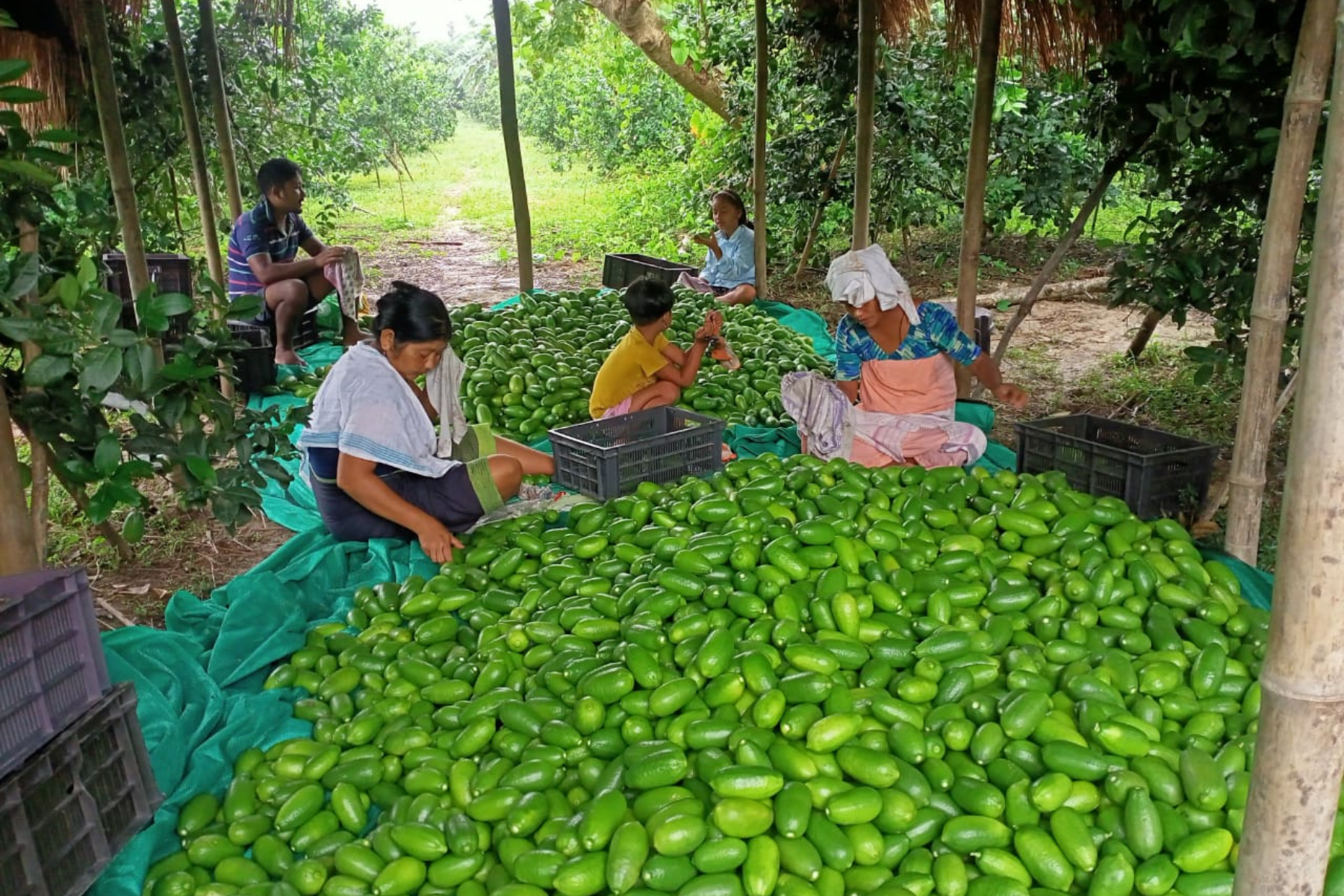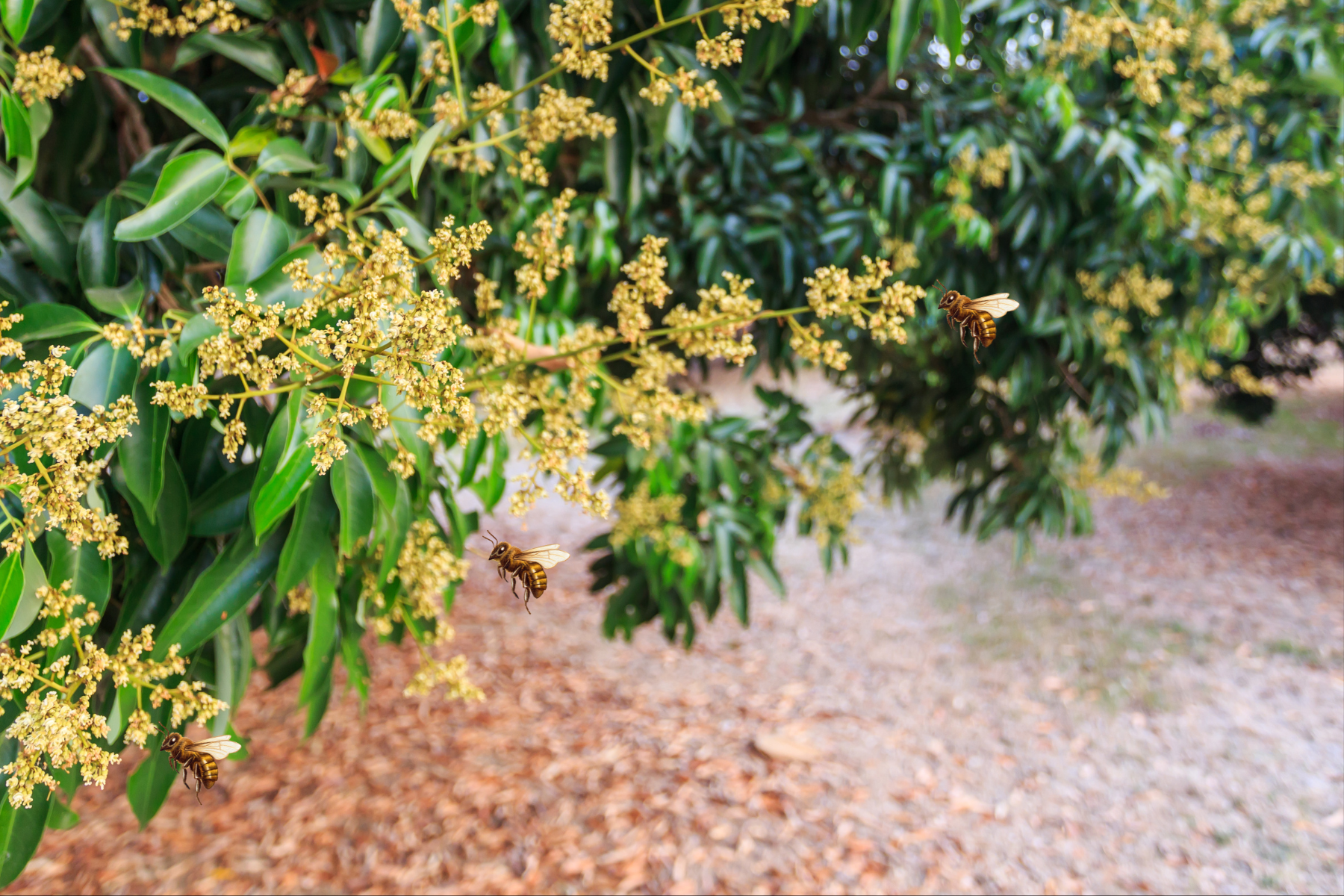Sikandarpur Karn (Unnao), Uttar Pradesh
In Unnao district, many farmers have switched to growing karela (bitter gourd) that is turning out to be a profitable move. The karela is proving to be a good choice of a kharif crop (monsoon crop) and fast becoming a favourite with the farmers.
“I am growing karela in two bighas of land. I have invested about sixty thousand rupees on the crop and I am expecting to make a profit of anything between one and a half to two lakh rupees,” Basudev Rawat from Badiya Kheda village in Sikandarpur Karn block, Unnao, told Gaon Connection.
The 55-year-old farmer went on to list the advantages of growing the bitter gourd. “First of all the karela brings in a lot more money than urad (black lentil), moong (green gram) and makka (corn). Then, because it is a bitter tasting produce, stray cattle, that has become a huge menace to farmers in the state, do not graze on it. Most importantly, with proper care it can yield as much as 100 quintals of karela from two bighas of land,” he said. (1 bigha = 0.25 hectare; 1 quintal = 100 kgs)
Also Read: Two months of drought, followed by extremely heavy rainfall; farmers in UP in despair
Shivnath Rawat from Badiya Kheda village has been cultivating bitter gourd for the past 15 years. He began with two bighas with land but now grows them on six bighas, the 75-year-old farmer told Gaon Connection. “The major expense in cultivating karela are the bamboo frames that support the vine to grow well. But returns are good,” he said.
According to Jairam Varma, district horticulture officer, Unnao, “In 2021-22, Unnao district saw bitter gourds being cultivated in 800 hectares of land. In 2016-17 it was not more than 500 hectares.” “A number of farmers are taking up karela cultivation,” he said.
The planting of the karela begins with the rains. The bitter gourd is planted two metres apart, and its vines are allowed to grow along the bamboo frames that are put up.
Also Read: Post-harvest cold storage unit puts smiles back on the faces of farmers in Odisha
Before Basudev Rawat switched to growing karela, he cultivated urad, moong, chillies and tinda (Indian squash). “It was always a struggle to recover the costs of growing these, let alone make a profit. And they are all vulnerable to excessive rain and attacks by the stray cattle,” he said. Bitter gourd is a safer crop, said the farmer, and the karelas were selling in the market at Rs 20- Rs 25 a kg.
“This year, because of insufficient rains in monsoon, we had to irrigate the bitter gourd with water pumps which meant more expenses. But since the price for karela at the market was good, we still managed some profit,” Shivnath Rawat said.

The bitter gourd is planted two metres apart, and its vines are allowed to grow along the bamboo frames that are put up.
About ten kilometres away from where Rawat farms is Nibai village where Malti Rawat cultivates karela in six bighas of land. “The karela is sold right off my farm, I don’t even have to take it to the mandi,” the 45-year-old farmer told Gaon Connection.
“I initially cultivated shakarkand (sweet potato), and invariably they would be damaged by wild boars or stray cattle. But that does not happen with karela,” she added.
Even though she suffered some losses due to the untimely rains in October, the price she got for her produce made up for it, Malti Rawat said.
Also Read: Repellant bio-spray helps keep stray cattle away from damaging crops

The karela is proving to be a good choice of a kharif crop (monsoon crop) and fast becoming a favourite with the farmers.
Expert advice on cultivating bitter gourd
Dheeraj Tiwari, agricultural scientist at the Krishi Vigyan Kendra in Unnao, recommended the following tips to farmers to ensure a good crop of bitter gourd.
- Sandy-loamy soil is suited to bitter gourd cultivation.
- Before the rains begin, the farmers should fertilise the land with cow dung.
- Immediately as the rains begin, the karela seeds should be planted at a distance of at least one and a half metres.
- Prepare a sturdy bamboo machan for the karela vines to grow well with support. This keeps the plant free of disease and gets a better yield.
- Weeding out of other grasses, etc., should be done regularly.
- If there are signs of any discolouration or disease, seek the advice of experts.





















